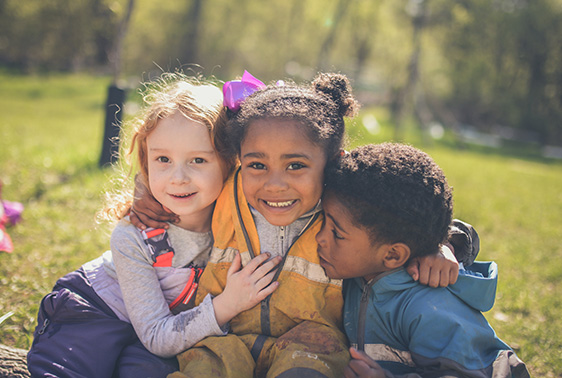IGNITING SUSTAINABLE GROWTH
When it comes to sustainability, the Learning Tree Farm Nature Preschool achieves it in more ways than one.
The first is through their nature-based curriculum, teaching their young students about the local flora and fauna and how we use it to sustain life itself. The second is by instilling a sense of responsibility, exploration, and respect for nature as a foundation of learning that can sustain over time. The third is by building on their parent organization, the Learning Tree Farm, to sustain and further their mission of providing hands-on learning experiences in a traditional farm setting.
About four years ago, the staff at the Learning Tree Farm began looking for opportunities to become more sustainable. At the time, much of their support was coming from field trips, which is a somewhat volatile market, as well as a limited opportunity to make a lasting impact on students who may not spend much time outdoors or have access to a farm. “What we really wanted to do was reach those schoolchildren more than just once or twice in their lives,” Education Director Meredith Florkey said. “We wanted to create that hands-on learning over time and have people really attach to a place.”
While the preschool was a dream for a few of the staff members, they knew they couldn’t start it in a vacuum. They began by examining other models, visiting other nature preschools and giving considerable thought to how a preschool fit into their mission. They also began programming to familiarize more families with the farm and their goals. As interest grew, people wanted more of a personalized experience, and these programs ultimately formed the first preschool class in August 2016. The Learning Tree Nature Preschool currently enrolls two sessions of students aged 3–5, and the staff even offer additional educational opportunities for
students and families who don’t attend the preschool.
The unique curriculum allows children to learn while taking cues from nature. For example, if the class sees or hears an owl on their daily hike to the farm, students may choose to paint a picture or write a story about it. They not only get to learn about growing fruits and vegetables, and the science behind how ice and mud are made, they get to experience it for themselves. When asked what makes the preschool so successful, Florkey shared that it’s a combination of time and space. The quality and quantity of time spent in nature, coupled with a creative curriculum to support it, create an environment to teach what makes sense at that time—instead of being bound to a curriculum of activities for day 37, 72, or 105.
Another aspect that contributes to the preschool’s success is the community that the teachers have consciously built with families, as well as volunteer groups that parents have organized themselves. While the preschool is self-sustaining, it opens up more possibilities for support and fundraising. The main goals were to create the community for learning, and for their long-term financial health.
“As parents and families become very invested in the farm, they become future financial sources as well as a source of strength,” Development Coordinator Saralinda Blanning said. Starting with their mission and building a community upon it has served the Learning Tree Farm and the Nature Preschool well in growth, impact and sustainability. “We didn’t want to get into that cycle where we’d have to have a grant to keep going,” Florkey said. “We look for opportunities to broaden our reach, but make sure it’s sustainable and that we’re not overreaching—that we’re able to do what we say we’re going to do.”

Learning Tree Advice:
- Focus on your mission and what your clientele needs or wants.
- If possible, build buy-in for your initiative to ensure a successful launch.
- Make sure the right people are involved to execute the vision.

